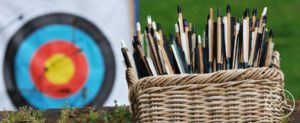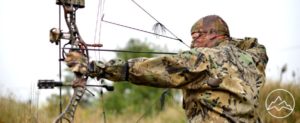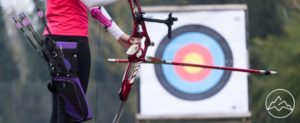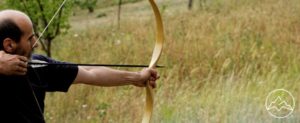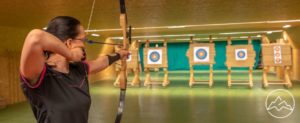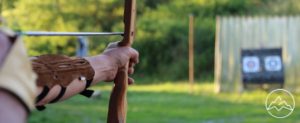In the vast world of archery, finding the perfect bow draw weight is akin to discovering the key that unlocks the door to optimal performance and accuracy. Much like a conductor skillfully wielding a baton, archers must carefully balance power and finesse to achieve their desired outcomes. Bow draw weight, measured in pounds, refers to the force required to fully draw a bow, and it plays a fundamental role in an archer’s shooting experience. This article aims to serve as a guide, providing valuable insights and expert advice on determining the appropriate draw weight. Through an objective and knowledgeable lens, we will explore the factors that influence this decision, such as age, gender, body type, and the type of bow being used. By adhering to recommended starting draw weights and considering individual capabilities, archers can embark on a journey towards mastery, armed with the knowledge to make informed choices.
Key Takeaways
- Draw weight is crucial in archery for performance and accuracy, and it can be measured using a bow weight scale.
- Factors such as age, gender, body type, and the type of bow used can influence the appropriate draw weight.
- Beginners should start with lower draw weight to avoid improper form and fatigue, and to develop proper technique.
- The perfect draw weight is a personal decision based on individual preferences, abilities, skill level, and shooting goals. Consulting with a local archery shop can provide guidance in determining the appropriate draw weight.
What is Draw Weight?
Draw weight is a crucial measurement in archery as it determines the force required to draw a bow, and it can vary depending on the type of bow and the purpose of its use. The draw weight of a longbow or recurve bow increases as the bow is pulled back, while compound bows have a set poundage. There are advantages to higher draw weights, including increased arrow speed and penetration. However, common misconceptions about draw weight include the belief that higher draw weight always leads to better accuracy and distance. In reality, the proper draw weight depends on personal preference and abilities. It is important to consider factors such as age, gender, body type, and the type of bow being used when determining the appropriate draw weight. Additionally, beginners are advised to start with a lower draw weight to avoid developing improper form and fatigue.
Determining Your Draw Weight
Determining one’s optimal pulling power is a pivotal process in the pursuit of precision and proficiency in archery. To measure draw weight accurately, a bow weight scale can be attached to the bowstring. Longbows and recurve bows are typically measured at 28 inches, while compound bows are measured to the valley of the bow. It is important to note that draw weight increases as the bow is pulled back for longbows and recurves, while compound bows have a set poundage. When starting in archery, it is recommended to begin with a lower draw weight to avoid developing improper form and fatigue. There are suggested starting draw weights based on factors such as age, gender, body type, and the type of bow being used. Consulting with a local archery shop can provide valuable guidance in determining the appropriate draw weight for individual needs and goals.
Choosing the Right Draw Weight
Selecting the appropriate poundage for an archer requires careful consideration and evaluation of various factors such as skill level, physical abilities, and shooting goals. When choosing the right draw weight, it is important to understand the draw weight limits imposed by the archer’s equipment, such as compound bows with restrictions on maximum poundage for target archery. Additionally, the impact of draw weight on accuracy should be taken into account. Higher draw weights can result in more force behind the arrow, leading to increased arrow speed and potential for longer distances. However, it is crucial to find a balance as excessive draw weight may compromise accuracy due to fatigue and improper form. Beginners are generally advised to start with a lower draw weight to develop proper technique and avoid strain. Ultimately, finding the perfect draw weight is a personal decision that should be based on individual preferences and abilities.
Frequently Asked Questions
Is there a minimum draw weight requirement for participating in target archery competitions?
The minimum draw weight requirement for participating in target archery competitions varies depending on the governing body and the specific competition. However, it is common for these requirements to be in place to ensure a level playing field and to maintain safety standards. Adjusting draw weight is important in archery as it allows the archer to find a balance between accuracy and comfort. It is recommended to consult the rules and regulations of the specific competition or organization to determine the minimum draw weight requirement.
Are there any recommended exercises or training programs to increase my draw weight?
Exercises and training programs can be implemented to increase draw weight in archery. Strength training exercises such as resistance band exercises, weightlifting, and push-ups can help develop the muscles used in drawing a bow. Additionally, using a bow trainer or resistance bands specifically designed for archery can aid in improving draw weight. Gradually increasing the number of repetitions and the weight used in these exercises can help archers build the necessary strength to handle higher draw weights.
Can I adjust the draw weight of my compound bow?
Yes, the draw weight of a compound bow can be adjusted. Compound bows are equipped with limb bolts that can be tightened or loosened to increase or decrease the draw weight. This allows archers to customize their bow to their personal preference and skill level. Adjusting the draw weight of a compound bow is particularly beneficial for beginners, as they can start with a lower draw weight and gradually increase it as their strength and technique improve.
What are some common signs of using a draw weight that is too heavy for me?
Common signs of drawing weight that is too heavy include difficulty in fully drawing the bow, shaking or trembling while holding the draw, inability to hold the draw for a sufficient amount of time, and inconsistent or inaccurate shots. To safely decrease draw weight, you can adjust the limb bolts on a compound bow or change to a lighter bow for recurve or longbow. It is important to gradually decrease the draw weight to avoid injury and maintain proper form.
Are there any specific factors to consider when determining draw weight for hunting different game species?
When determining draw weight for hunting different game species, there are several factors to consider. These include the size and weight of the animal, the distance of the shot, and the type of bow being used. It is important to choose a draw weight that allows for accurate and ethical kills, ensuring a clean and humane harvest. Additionally, recommended exercises and training programs can help increase draw weight, improving strength and accuracy in the field.
Conclusion
In conclusion, determining the perfect draw weight for a bow is a crucial step for archers to ensure optimal performance and accuracy. Factors such as age, gender, body type, and the type of bow being used should be considered when selecting the appropriate draw weight. Starting with a lower draw weight is advisable for beginners to avoid developing improper form and fatigue. Seeking guidance from experts in archery and considering any restrictions set by state wildlife agencies can provide valuable assistance in finding the ideal draw weight. Remember, “practice makes perfect” and with the right draw weight, archers can achieve their desired shooting experience and skill level.


